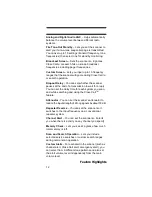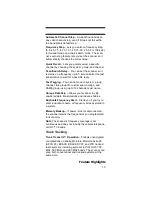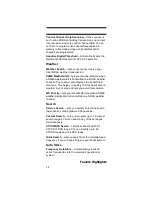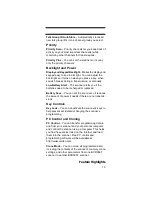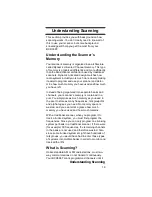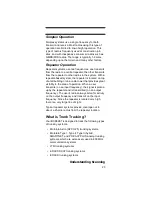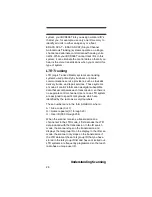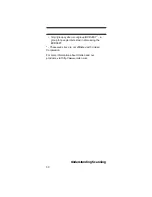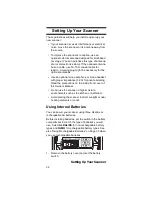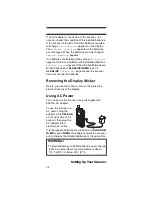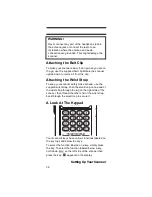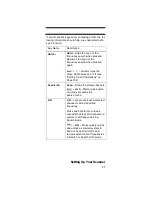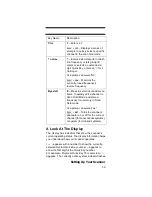
26
Understanding Scanning
The computer then assigns that talk group to a specific
voice channel and transmits that data over the control
channel. All radios in that talk group switch over to the
assigned voice channel and the user can begin speak-
ing. This all typically takes place in about a sec-
ond...the person transmitting hears a beep from their
radio when the channel is assigned and then it is OK
to start talking.
The systems in use are:
Motorola Type I – the radios send the radio ID, the
fleet and subfleet talk group ID to the control channel
each time they transmit. To program a Type I system,
you need to know the system’s
fleet map
. The most
common fleet maps are included in “Preset Fleet
Maps” on Page 129. You can also find fleet map
resources on the web.
Motorola Type II – the radios only send the radio ID
and radio channel code to the control channel. The
central computer keeps a database of radio ID’s and
which talk group is assigned to which channel code for
each radio, so with this system the user’s radio sends
only about
1
/
3
the data as a Type I system with each
transmission. Type II systems do not use Fleet-
subfleet talk groups; instead they use a 5-digit ID for
each talk group.
Type IIi Hybrid — these systems support a mix of both
Type I and Type II users. Like Type I systems, you
must know the system’s fleet map to ensure proper
tracking.
Motorola ASTRO 25 (APCO 25) – these radios are
similar to Type II systems, but send only the radio ID
and radio channel code to the control channel, trans-
mitting voice in digital form.
Summary of Contents for UBC396T
Page 3: ...BCD396T OWNER S MANUAL OWNER S MANUAL ...
Page 154: ...152 One Year Limited Warranty ...
Page 155: ...153 One Year Limited Warranty ...

